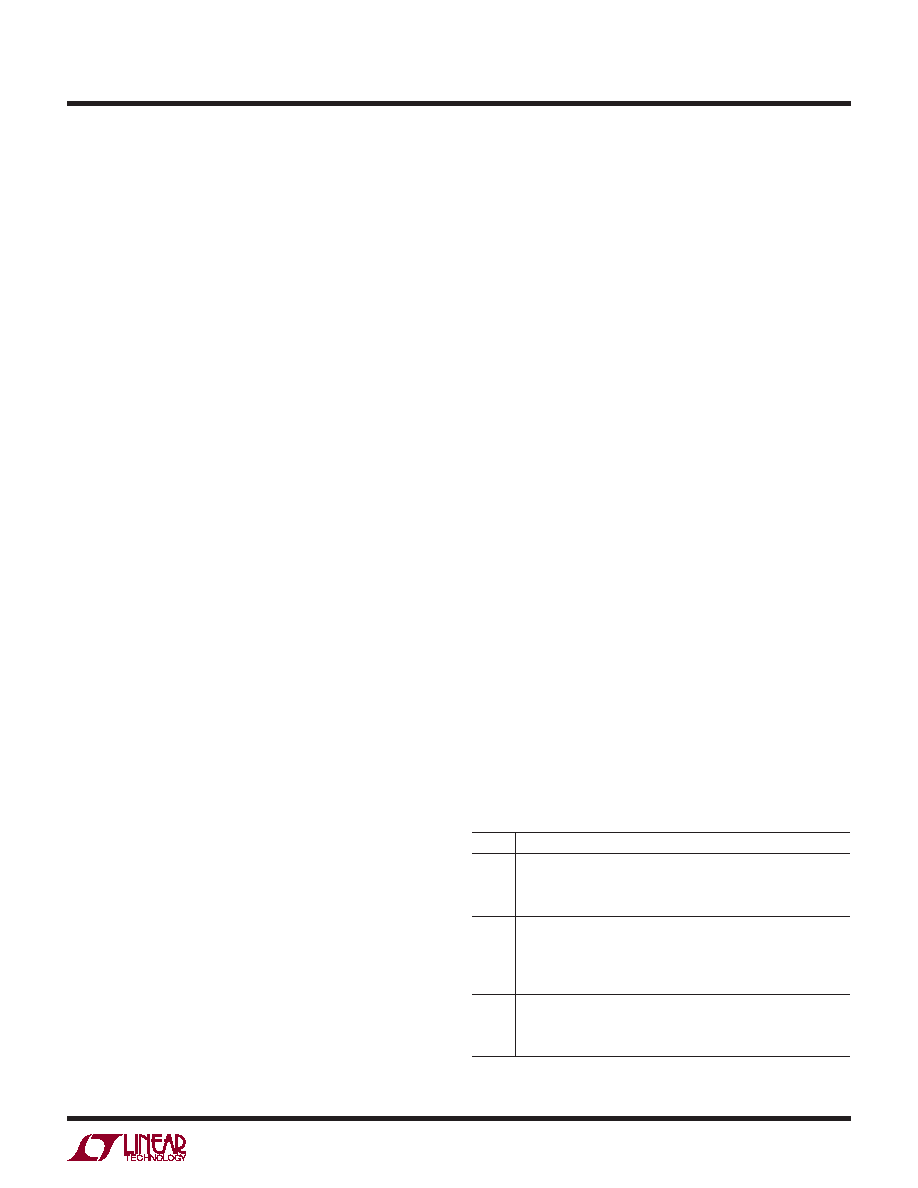- 您現(xiàn)在的位置:買賣IC網(wǎng) > PDF目錄19023 > DC1370A-E (Linear Technology)BOARD DEMO 40MSPS LTC2257-14 PDF資料下載
參數(shù)資料
| 型號: | DC1370A-E |
| 廠商: | Linear Technology |
| 文件頁數(shù): | 18/34頁 |
| 文件大小: | 0K |
| 描述: | BOARD DEMO 40MSPS LTC2257-14 |
| 軟件下載: | QuikEval II System |
| 設(shè)計資源: | DC1370A Design Files |
| 標準包裝: | 1 |
| 系列: | * |
| 相關(guān)產(chǎn)品: | DC718C-ND - DEMO QUIKEVAL-II DATA |
第1頁第2頁第3頁第4頁第5頁第6頁第7頁第8頁第9頁第10頁第11頁第12頁第13頁第14頁第15頁第16頁第17頁當前第18頁第19頁第20頁第21頁第22頁第23頁第24頁第25頁第26頁第27頁第28頁第29頁第30頁第31頁第32頁第33頁第34頁

25
225814fc
LTC2258-14
LTC2257-14/LTC2256-14
For more information www.linear.com/LTC2258-14
The digital output is decoded at the receiver by invert-
ing the odd bits (D1, D3, D5, D7, D9, D11, D13.) The
alternate bit polarity mode is independent of the digital
output randomizer—either, both or neither function
can be on at the same time. When alternate bit polarity
mode is on, the data format is offset binary and the 2’s
complement control bit has no effect. The alternate bit
polarity mode is enabled by serially programming mode
control register A4.
Digital Output Test Patterns
To allow in-circuit testing of the digital interface to the
A/D, there are several test modes that force the A/D data
outputs (OF, D13-D0) to known values:
All 1s: All outputs are 1
All 0s: All outputs are 0
Alternating: Outputs change from all 1s to all 0s on
alternating samples
Checkerboard:Outputschangefrom101010101010101
to 010101010101010 on alternating samples
The digital output test patterns are enabled by serially
programming mode control register A4. When enabled,
the test patterns override all other formatting modes: 2’s
complement, randomizer, alternate-bit-polarity.
Output Disable
The digital outputs may be disabled by serially program-
mingmodecontrolregisterA3.Alldigitaloutputsincluding
OFandCLKOUTaredisabled.Thehighimpedancedisabled
state is intended for long periods of inactivity—it is too
slow to multiplex a data bus between multiple converters
at full speed.
Sleep and Nap Modes
The A/D may be placed in sleep or nap modes to conserve
power. In sleep mode the entire A/D converter is powered
down,resultingin0.5mWpowerconsumption.Sleepmode
is enabled by mode control register A1 (serial program-
ming mode), or by SDI (parallel programming mode).
The amount of time required to recover from sleep mode
depends on the size of the bypass capacitors on VREF,
REFH, and REFL. For the suggested values in Figure 8,
the A/D will stabilize after 2ms.
In nap mode the A/D core is powered down while the
internal reference circuits stay active, allowing faster
wake-up than from sleep mode. Recovering from nap
mode requires at least 100 clock cycles. If the applica-
tion demands very accurate DC settling then an additional
50s should be allowed so the on-chip references can
settle from the slight temperature shift caused by the
change in supply current as the A/D leaves nap mode.
Nap mode is enabled by mode control register A1 in the
serial programming mode.
DEVICE PROGRAMMING MODES
The operating modes of the LTC2258-14/LTC2257-14/
LTC2256-14 can be programmed by either a parallel
interface or a simple serial interface. The serial interface
has more flexibility and can program all available modes.
Theparallelinterfaceismorelimitedandcanonlyprogram
some of the more commonly used modes.
Parallel Programming Mode
To use the parallel programming mode, PAR/SER should
be tied to VDD. The CS, SCK and SDI pins are binary logic
inputs that set certain operating modes. These pins can
be tied to VDD or ground, or driven by 1.8V, 2.5V or 3.3V
CMOS logic. Table 2 shows the modes set by CS, SCK
and SDI.
Table 2. Parallel Programming Mode Control Bits (PAR/SER = VDD)
PIN
DESCRIPTION
CS
Clock Duty Cycle Stabilizer Control Bit
0 = Clock Duty Cycle Stabilizer Off
1 = Clock Duty Cycle Stabilizer On
SCK
Digital Output Mode Control Bit
0 = Full-Rate CMOS Output Mode
1 = Double Data Rate LVDS Output Mode
(3.5mA LVDS Current, Internal Termination Off)
SDI
Power Down Control Bit
0 = Normal Operation
1 = Sleep Mode
applicaTions inForMaTion
相關(guān)PDF資料 |
PDF描述 |
|---|---|
| A3CA-7011 | SWITCH UNIT-IP40 |
| C11132_STRADA-DW | LENS FOR OSRAM OS DRAGON |
| KC2520B27.0000C10E00 | OSCILLATOR 27.0000MHZ SMD |
| CM7265 | LAMP T1 BI-PIN BASE 5V |
| 17845LG | LAMP WAVE PLUS 45" ARM CLAMP BS |
相關(guān)代理商/技術(shù)參數(shù) |
參數(shù)描述 |
|---|---|
| DC1370A-F | 功能描述:BOARD DEMO 25MSPS LTC2256-14 RoHS:是 類別:未定義的類別 >> 其它 系列:* 標準包裝:1 系列:* 其它名稱:MS305720A |
| DC1370A-G | 制造商:Linear Technology 功能描述:12BIT ADC Eval Brd, Rq. DC1371 & DC1075 制造商:Linear Technology 功能描述:12BIT ADC Eval Brd, Rq. DC1371 & DC1075; Silicon Manufacturer:Linear Technology; Silicon Core Number:LTC2261-12; Kit Application Type:Data Converter; Application Sub Type:ADC; Kit Contents:Board, Guide |
| DC1370A-H | 制造商:Linear Technology 功能描述:12BIT ADC Eval Brd, Rq. DC1371 & DC1075 制造商:Linear Technology 功能描述:12BIT ADC Eval Brd, Rq. DC1371 & DC1075; Silicon Manufacturer:Linear Technology; Silicon Core Number:LTC2260-12; Kit Application Type:Data Converter; Application Sub Type:ADC; Kit Contents:Board, Guide |
| DC1370A-I | 制造商:Linear Technology 功能描述:12BIT ADC Eval Brd, Rq. DC1371 & DC1075 制造商:Linear Technology 功能描述:12BIT ADC Eval Brd, Rq. DC1371 & DC1075; Silicon Manufacturer:Linear Technology; Silicon Core Number:LTC2259-12; Kit Application Type:Data Converter; Application Sub Type:ADC; Kit Contents:Board, Guide |
| DC1370A-J | 功能描述:BOARD DEMO 65MSPS LTC2258-12 RoHS:是 類別:未定義的類別 >> 其它 系列:* 標準包裝:1 系列:* 其它名稱:MS305720A |
發(fā)布緊急采購,3分鐘左右您將得到回復。